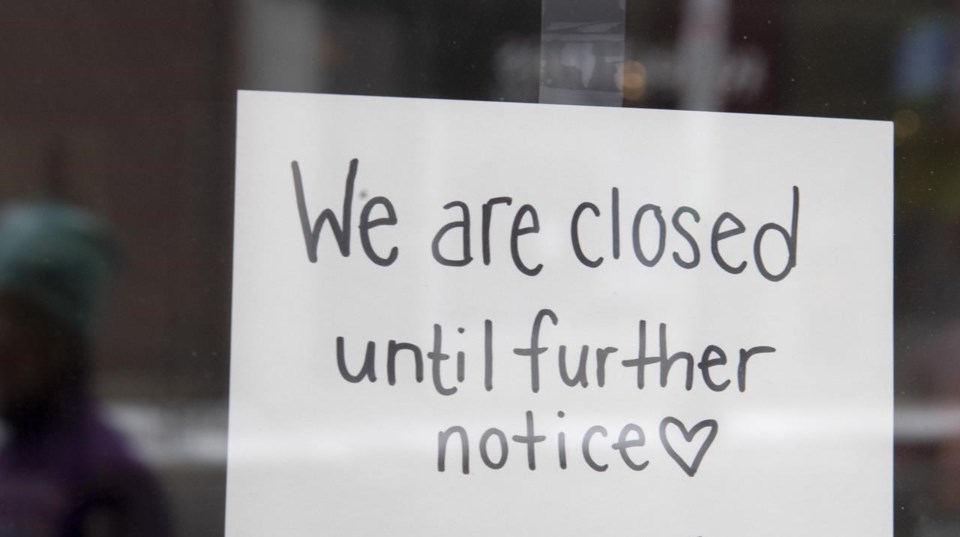TORONTO — The mid-January deadline for businesses to qualify for partial forgiveness of pandemic loans likely played a major role in driving up business insolvencies that month, said the Canadian Federation of Independent Business.
As businesses continue to face inflation, labour shortages, higher interest rates and weakened consumer spending, for many the deadline was “the straw that broke the camel’s back,” said Simon Gaudreault, the CFIB’s chief economist and vice-president of research.
“The math just doesn’t add up anymore,” he said.
Business insolvencies more than doubled in January compared with a year earlier as they also surpassed pre-pandemic levels for the month.
The Office of the Superintendent of Bankruptcy says there were 759 business insolvencies in January, up 42.4 per cent from December and up 129.3 per cent from January 2023.
That compares with 308 in January 2020, before the pandemic began. Business insolvencies include bankruptcies and proposals (where some or all of the debt is paid back).
The $60,000 Canada Emergency Business Account loans were given out to almost 900,000 businesses and non-profit organizations to help them survive the pandemic. Up to one-third of that loan could be forgiven if the remaining two-thirds were repaid by Jan. 18 — otherwise, the debt became a three-year loan with five per cent annual interest.
Businesses were also offered the option to refinance their loan before the end of March and still be eligible for partial forgiveness.
Lobby groups including the CFIB had been calling on the government to extend the deadline, warning it could mean closure for thousands of struggling businesses. It had previously been extended twice.
Many businesses missed the January deadline, said Gaudreault, noting that many also have other kinds of debt stemming from pandemic closures.
And while the spike in insolvencies is worrying, he said the real toll is likely much higher as many small businesses don’t bother filing for insolvency, instead just closing their doors.
“Insolvencies are just the tip of the iceberg, unfortunately,” he said.
The biggest increases this January were in accommodation and food services, retail trade, and construction.
Business bankruptcies rose more sharply year-over-year than proposals.
Consumer insolvencies increased in January, but not nearly as sharply. They grew by 23.5 per cent year-over-year and remained lower than in January 2020.
Business and consumer insolvencies have been on the rise for a while, coming up from pandemic-driven lows.
Business insolvencies were up 41.4 per cent in 2023 compared with 2022.
The Canadian Association of Insolvency and Restructuring Professionals said in a February press release that companies are struggling with pandemic debt and higher interest rates.
Slower consumer spending is also weighing on businesses, the association said, as Canadians continue to grapple with higher prices and interest rates.
This report by The Canadian Press was first published March 5, 2024.
Rosa Saba, The Canadian Press




